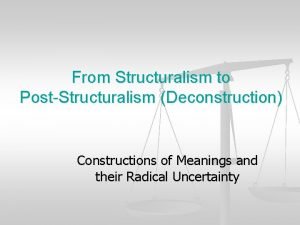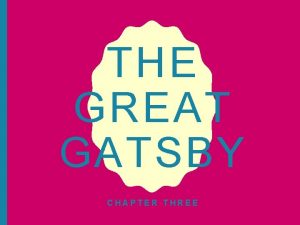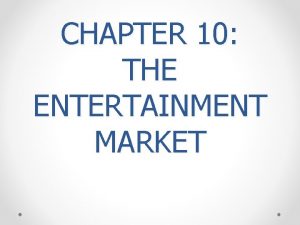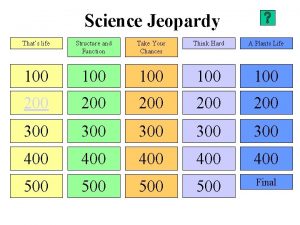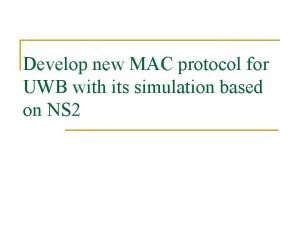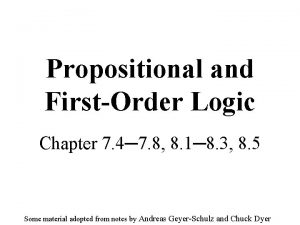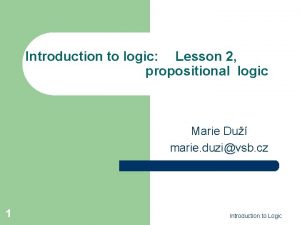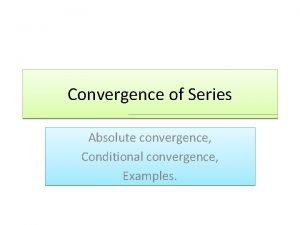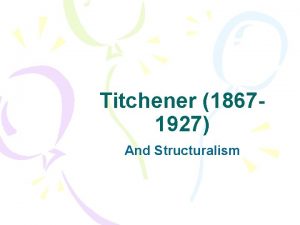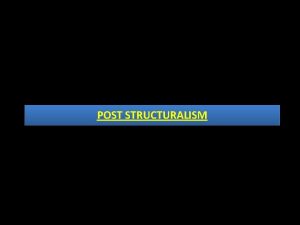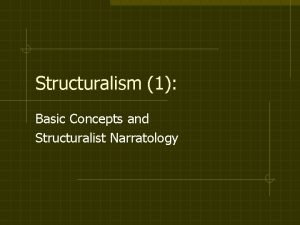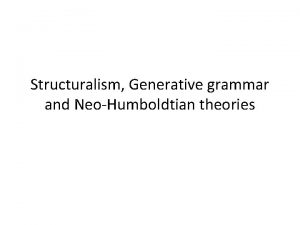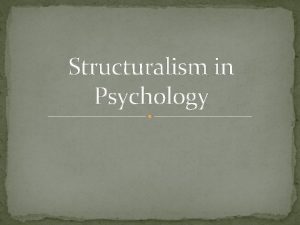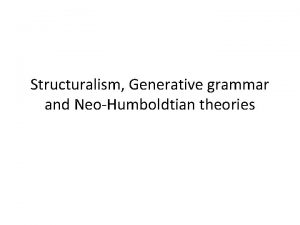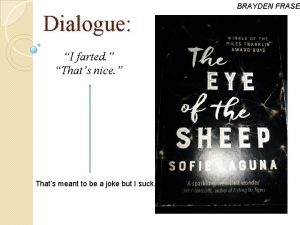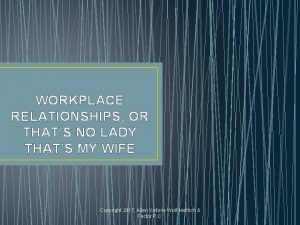STRUCTURALISM INTRODUCTION Structuralism is the methodology thats implies

















- Slides: 17

STRUCTURALISM

INTRODUCTION Structuralism is the methodology that’s implies elements of human culture must be understood by the way of their relationship to a broader, over arching system of structure. It works to uncover the structures and all things were underlined that human do, think, perceive and feel. Its essence is the belief that things cannot be understood in isolation they have to be seen in the contest of the larger structures they are part of. Structures are imposed by over way of perceiving the world and organizing experience rather than objective entities. According to it meaning is always outside

BACKGROUND It refers to a set of general principles shared by prominent European Linguists of the inter war period who were all deeply influenced by Ferdinand de Saussure (Course de Linguistique Generale). However, it is also customary to refer to American Linguistics as practiced from the 1930 throught he 1950 as structural although from European structuralism and Saussure’s influence rather limited. Moreover, several European post war schools and movements are generally seen as falling within the preview of structuralism as well. It would be erroneous to refer to a single structuralist tradition in Linguistics and in order to be properly understood, both the European and American Structuralist tradition in Linguistics have partly to be assessed historically.

BEGINNING It is noteworthy that Saussure himself never used the term structuralism, in his work. It was R. Jakobson who coined the term in 1929 in reference to an emerging new method which was being, psychology, sociology and anthropology. But its origin is connected with Saussure’s theory of signs, but Saussure himself concentrated instead on the patterns and functions of language in use today with the emphasis on how meanings are maintained and established on the functions of grammatical structures.

e SAUSSURE’S THEORY OF SIGNS He gives three pronouncements Ø are maintained by convention only. Words are unmotivated signs. There is no connection between words and what is designated. Names are inconsistent and slippery. Ø He emphasized that the meanings of the words are relational means that no word can be defined in isolation from other words. Words are in a paradigmatic chain. It is a substitutional relationship that a linguistic unit has with the other units. Ø Language constitutes our world. Meaning is always attributed to the object or idea by the human mind and constructed by and expressed through language.

SAUSSURE’S THEORY OF SIGNS Ø Language works in binary opposition. Ø He gives the distinction between Langue and Parole is the language we acutely realize it in individual utterances and parole refers to the concrete instances of the use of language. Ø He gives the distinction between signifier and signified. Words do not refer directly to things. What is written or spoken is signifier and what is thought is signified.

CLAUD LEVI-STRAUSS (STRUCTURAL ANTHROPOLOGY) It was created by Claud Levi- Strauss in the late 1950’s. It seeks the underlying common denominators, the structures, that link all human beings regardless of the differences among the surface phenomena of the cultures to which they belong. The existence of structural similarities among seemingly different myths of different cultures was one of the levis Strauss’s particular areas of interests. His goal was to discover when different myths are actually different versions of the same myths, in order to show that human being from very different cultures share structures of consciousness that project themselves in the formation of structurally similarly myths.

CLAUD LEVI-STRAUSS (STRUCTURAL ANTHROPOLOGY) He analysis the Oedipus myth, which he believed embodies the conflict between our knowledge that we are born of sexual union and persistent belief among many culture that we are born of the earth. By reading Oedipus myth, we can have an image of myth of that time and the mythodology of the Greek. Levi-Strauss has belief that there is no true and original version of any myth. Each version is equally valid.

FOR EXAMPLE John Donne’s “Good Morrow” can only be understood if we first have a clear notion of the genre parodies and subverts. Because any poem is an example of a particular genre, structure, rules and conventions. As “Alba” the (dawn song): A poetic formation from 12 th century in which lovers lament the approach of daybreak.

ROLAND BARTHES (SEMIOTICS) A French Philosopher who applied the structuralism method to the general field of modern culture by analyzing narrative structures in 1968. He has written his The Pleasure of the Text in 1973. He gives the ideas of symbols, by playing each item in wider structures of values, beliefs and symbols as the key to understand it. Actually he is giving the idea of semiotics. He argues professional wrestling can be viewed as a signs system. It can be interpreted as a language with a very specific purpose to provide the audience with the cathartic satisfaction of watching justice triumph in a situation that makes it very clear, who is good and who is evil.

ROLAND BARTHES (SEMIOTICS) This purpose is revealed in the structural similarities of the matches. Ø Each wrestler is a clear type. Ø Each match contains contestants who by their type, their behavior during a particular match, or both can be clearly identified as good guy and the bad guy. Ø Each match ends with the triumph of goodness over evil.

ROLAND BARTHES (SEMIOTICS) The sings system can be further elaborated that the sound image “tree” refers to the idea of a tree only because speakers of English have agreed to use it that way. This symbol is a kind of interpretations. The whole world of human culture is a “text” waiting to be read and structuralism provides theoretical framework to do it.

BARTH’S FIVE CODES Hermeneutic code Ø In stories the full truth is often avoided. The purpose of the author in this is to keep the audience guessing and investigating the enigma until the final scenes when all is revealed. It creates mystery and curiosity in the story. Proaratic Code Ø It indicates that something is going to happen and the readers starts guessing a to what will happen next. It is like hermeneutic code to create story’s reader’s interest tension and the

BARTH’S FIVE CODES Semantic Code Ø It refers to connotation within the story that gives additional meaning over the basic denotative meaning of the world. It gives extended meaning to the text. Symbolic Code Ø It is like unveiling the hidden meanings. It is similar to semantic code, but acts at a wider, broaden, and deeper level to set the meanings. Cultural Code Ø This code refers to anything that is founded on some kind of canonical works that cannot be challenged and is assumed to be a foundation of truth.

STRUCTURALISM AND LITERATURE Ø Literature is verbal art and it is composed of language. So its relation to the master structure language is very direct. Ø Meanings are always outside the text. Ø Structuralism is not interested in what a text means, but in how a text means what it means Ø Issues of interpretation and literary quality are in the domain of surface phenomena , the domain of parole.

STRUCTURALISM AND LITERATURE Ø Structuralism seeks instead the langue of literary texts, the structure that allows text to make meaning, often referred to as a grammar because it governs the rules by which fundamental literary elements are identified. Ø Human beings project there narrative imaginations in two fundamental ways: In representations of an idea world and in representation of the real world. The real world is the world of experience, uncertainity and failure

THANK YOU
 Logocentrism
Logocentrism I hate careless people. that's why i like you
I hate careless people. that's why i like you Daisy’s devine day
Daisy’s devine day Thats entertainment dance competition
Thats entertainment dance competition Pop thats their warmup
Pop thats their warmup Thats normal
Thats normal Thats all im asking for
Thats all im asking for Todays objective
Todays objective Thats just rude
Thats just rude Thats life answers
Thats life answers Thats all thank you
Thats all thank you Thats not fair
Thats not fair Promotions o'cool
Promotions o'cool Implies in propositional logic
Implies in propositional logic Implies objective listing of the job title tasks duties
Implies objective listing of the job title tasks duties Negation of implication
Negation of implication Four components of mathematical system
Four components of mathematical system What does converges conditionally mean
What does converges conditionally mean
